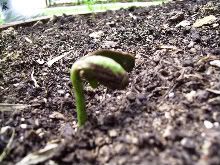"His clothes were wet and clammy and there was a faint chill. He pulled the remains of his windbreaker, pieces really around his shoulder and tried to hold what heat his body could find."
Q1) Explain clearly the chill that Brian felt.
Q2) Describe fully how Brian managed to 'hold what heat his body could find' despite the winndbreaker being in pieces.
How To Soar in PSLE - BTPS Way!!
Interact with complex questions / graphs / pictures to pick up valuable clues (don't highlight - just use your pen to underline words or scribble notes)
Start with Booklet A and do it meticulously with full focus - explore all 4 distractors before making final choice.
MANAGE your TIME - to score well, you need to try to finish ALL questions.
Specific answers = answers that are relevant to question.
When confused, choose any of the following strategies:
1. Ask, "What Science idea is being used in question?"
2. Pose other questions to clarify your thoughts
3. COMPARE to another set-up
4. COMPARE to a reverse situation
5. Connect to your knowledge in life (yes, you do have lots of prior / other knowledge)
6. Break down your answer in steps before crafting final answer.
Common problems with wrong answers:
*Answers are generic/vague and do not connect to that specific question
*Answers are not scientific and do not explain using Science ideas
*Answers do not make use of data provided when asked
*Answers did not make comparisons - use words like more/most etc..when asked
BTPS supports all P6 in achieving their PSLE GOALS!!
Start with Booklet A and do it meticulously with full focus - explore all 4 distractors before making final choice.
MANAGE your TIME - to score well, you need to try to finish ALL questions.
Specific answers = answers that are relevant to question.
When confused, choose any of the following strategies:
1. Ask, "What Science idea is being used in question?"
2. Pose other questions to clarify your thoughts
3. COMPARE to another set-up
4. COMPARE to a reverse situation
5. Connect to your knowledge in life (yes, you do have lots of prior / other knowledge)
6. Break down your answer in steps before crafting final answer.
Common problems with wrong answers:
*Answers are generic/vague and do not connect to that specific question
*Answers are not scientific and do not explain using Science ideas
*Answers do not make use of data provided when asked
*Answers did not make comparisons - use words like more/most etc..when asked
BTPS supports all P6 in achieving their PSLE GOALS!!
Thursday, May 28, 2009
Subscribe to:
Post Comments (Atom)
Science Around Me (SAM)
SAM is a Science journal that allows pupils to express themselves in their favourite ways about Science.
SAM is another great opportunity for pupils to THINK and TALK Science in a medium that is customised to their learning styles.
SAM allows teachers to informally assess understanding of the child and clarify misconceptions in their learning.
SAM is another great opportunity for pupils to THINK and TALK Science in a medium that is customised to their learning styles.
SAM allows teachers to informally assess understanding of the child and clarify misconceptions in their learning.
Factors Affecting the Environment by Gog Ru Yan - 6G

When Ice Changes into Water by Goh Chee Yan - 5G
Do you wonder whether the mass of ice changes when it melts into water. Try this out:
1. Put a few ice cubes into a plastic bag
2. Tie the mouth of the bag tightly
3. Weigh the bag of ice cubes (if there is condensation outside the bag, wipe it dry before weighing)
4. Place the bag in the sun
5. When ice has melted, wipe the outside of the bag dry (refer to step 3)
6. Weigh the bag
You will discover that the mass of the bag remains the same!
There is no change in mass when ice melts!!
1. Put a few ice cubes into a plastic bag
2. Tie the mouth of the bag tightly
3. Weigh the bag of ice cubes (if there is condensation outside the bag, wipe it dry before weighing)
4. Place the bag in the sun
5. When ice has melted, wipe the outside of the bag dry (refer to step 3)
6. Weigh the bag
You will discover that the mass of the bag remains the same!
There is no change in mass when ice melts!!
Simple Steps to fight Dengue by Elizabeth Wu 4C







33 comments:
Q1)
The moist/water of the clothes is of a lower temperature than his body , hence he felt a chill.
Gu Yuling 6C
Q2)
The remaining pieces of windbreaker not in a good conition , however , they are still bad conductors of heat . Which means that they trap a layer of air (with heat from his body) under them , and hence holding the heat .
Gu Yuling 6C
1)his clothes and body were both wet.when the wind blows,the water on his clothes and body are being evaporated,along with Brian's body heat,cooling him down which made him feel the chill.
tan siqi9
(6G)
Youn Yea Won Ellia(6C)
Q1) Have you ever dropped few droplets of alcohol on your skin before? You will fill a very cool sensation after a few moments. This is because the evaporation of the alcohol took away the heat from his body. When the wind blew, his clothes became drier and to be drier, the water had to evaporate. This took away the heat from his body.
Q2)There is layer of air in between layers of clothes he was wearing. Air is a bad conductor of heat, and this does not allow the cold to be transferred easily. When he pulled together his clothes, less wind could enter any opening in his clothes. This helped him hold the heat his body could find.
For the first question, we can reduce this statement into a normal process in human, perspiration. Perspiration lets our skin excrete water ( and Urea and other waste material but we do not have to care about them). The water actually evaporates with a cool gust of wind, as wind when it is cold, is heavier than air thus making it absorbed by the water particles in the clothes and the body, as water evaporate, the cool air goes onto the body and the water particles will then be evaporate. But as the cool air is heavier, it will only apply for the lower part of the body thus creating the chill.
For the second question(I dont really care of the spelling error in winndbreaker), a wind breaker actually does not really hold the heat inside your body. Why? Since it is the air pocket in the windbreaker that actually holds the heat in. The heat energy is going out from our body thus a windbreaker may still help but only a little.
2)even though the windbreaker is in pieces,it is still a poor conductor of heat.so it traps a layer of air,along with Brian's body heat and retains the heat.
tan siqi(6G)
Q1. Since both his body and clothes were wet, when the wind blew the water evaporated, and some of his body heat was blown away (or whatever that a scientist would say about it).
Q2. The windbreaker was a heat insulator. This would mean the windbreaker traps a layer of air that is more or less warm (since it got warmed up slightly by Brian's body heat) and so retains the heat.
-- Wendy 6C
Just to clarify, The water particles have heat energy and when they evaporates, they will carry the heat away from him.
Q1. Brain's clothes were wet and moist . The water on his body evaporates and when it evaporates , his body loses heat to the surrounding and thus , he felt a chill.
Yiu Chen Zung 6G
Q1
Brian and his clothes were wet and his body temperature was higher than his clothes,so when the wind blew,he and his clothes starts to evaporate and his body lose heat to the surrounding,so he felt chill.
Q2
The windbreaker is a poor conductor of heat,so it trap a layer of air and retain the heat from Brian.
LiWeiWei,6grace
There is also a similar situation. Have you ever bathe, then straight away go into an air-conditioned room? If no, you can try that.
You will feel very cold, and try method to let your body gain heat. If the temperature in the room is quite cold, you may even feel a chill. Chill refers that feeling cold after an exposure to cold enviroment. Another similar situation is when after you play sports, you drink some cold water. You will feel very cold. To make matters worse, if there was a strong and cold wind, you will defitnely feel a chill.
In this case, the drenched clothes is at a lower temperature then its body temperature.But the difference in temperature is not too much as he only felt a faint chill.(Thinking)Yes got it!
How do the heat from the clothes escape?
The clothes had water and heat at the same time, and when a wind comes, the water will evaporate. But in some of the water, there will be heat and when the water evaporate, it takes away some of the heat. Water is also a conductor of heat so it increase heat loss, and more water will evaporate and the heat will go away???(I am not so sure). Thus, some of the water will escape carrying the heat inside the clothes.
2.Question to ask: What is heat? It is a heat transfer from one system to another.The transfer here is the air and the windbreaker.
A windbreaker is a insulator of heat, thus it reduces heat loss or heat gain and it is designed to resist wind chill and light rain.
An insulator of heat, also reduces heat transfer. So do you get it???
(All these must thank Wikipedia as I found all these there so it should be true)
AN INSULATOR of heat REDUCES HEAT TRANSFER AND THE HEAT TRANSFER HERE IS THE AIR AND WINDBREAKER.
There is air in almost everywhere so I suppose there is air in the clothes. Insulator of heat is back again, so is air a insulator of heat? YES. So it also reduces heat transfer. Now is air in the clothes and in Brian's body. So the coldness will not transfer so fast, thus it is possible that even though the windbreaker is in pieces, it still is a insulator of heat.Spend 2 hrs here.
MARCUS
Q1)As evaporation takes place at any temperature, when Brian felt the chill,evaporation is also taking place.At that point of time Brian's shirt was wet which means that there was water to be evaporated.It is a natural cycle that water is being evaporated whenever it exist.In order for the water to evaporate,it needs to gain heat from somewhere which has a higher temperature than itself.It would gain heat from its surroundings,the shirt and also from Brain.But brian is only able to feel the heat loss on his body as that is himself.Another thing is that the water would gain more heat from him as the when his shirt is wet,it would naturally attach itself onto his body.A very good example is when you go swimming.when you go swimming,inside the pool,you would realise that the swimming attire would attach itself onto your body because it is wet.When the wet clothes attaches itself onto Brian,it would gain the most heat from him.When the water gains heat,Brian losses heat to it and that makes Brian feel the chill.
Q2)Eventhough the windbreacker was broken,it is still another layer of fabric.Between fabrics, there is air and air is a bad conductor of heat.It would be able to trap the heat produced by the body.the layer between the clothes and the broken windbreaker all have air spaces between them and the more air spaces there is, the better heat is being trapped.But in that case, Brian's clothes itself is wet and would instead gain heat from his body and Brian would then lose heat to it.But with another layer of cloth outside the the wet cloth it would trap the heat.For example, the water takes away 4 units of heat from Brian,the water took 1 unit of heat from the surroundings before Brian use the winbreaker.After Brian used the windbreaker, it traps the 4 units of heat the body produced earlier and the 1 unit the water took from the surroundings,therefore,the 5units of heat altogether is still with Brian.The body found 4 units of heat,the windbreaker held 4 units of heat too.
Pauline
His clothes were wet and damp and have a lower temperature than the body. As cold water evaporates, there will also be cold air.And when the cold air have a lower temperature than the body and when there is a wind, the cold air isseeped in the skin by the pores thus there was a faint chill.
~Syafiqah 6Grace
the comment before this is for Q1.
Syafiqah
Q2.The windbreaker is wind-proof. The wind would have cold air but Brian need to make himself warm. That's why he put the pieces of the-bad-conditioned-but-still-can-use-windbreaker around his shoulder so that to trap heat that is given out by his body and the surroundings.
~Syafiqah 6Grace
Q1)The temperature of the water on the clothes is lower than his hence he felt a faint chill.In order to get warm he pull his windbreaker to cover as it is not a good conductor of heat which trap heat that came from his body.
Q2)Although his windbreaker is in bits amd pieces ,it is after all not a good conductor of heat and still can ntrap heat which came from his body.
juan pang(6grace)
Q1)
the cold surface of his clothes was even colder then his body temperature, so he felt a chill
Bronson Chua 6Joy
Q2)
even broken in pieces, the windbreaker was still a bad conductor of heat. therefore, there will be a layer of hot air around it.
Bronson Chua 6 joy
1)his body and cloth are wet so when the wind blew the water started to evaporatesso he lose heat to the water vapour so he felt chill
yi wen 6 grace
2)although the windbreaker is in pieces it still not a good conductor of heat so it could not trap the heat
the comment before this is make by yi wen from 6 grace
Q1)
His clothes were wet and the water which is of a lower temperature than his body temperature will evaporate causing a loss of heat and there is a faint chill.
Q2)
The windbreaker is suited for it to keep a person warm as it traps air particles and keep the heat within the windbreaker,hence,he could hold the heat around him.
JJ (6C).
1)As his clothes were wet and clammy,and when the wind blows,the water on his clothes will evaporate and when it does,brian would actually feel a chill...
Q2:
There is air gaps that trap the heat produced by his/her body when a person wears a fabric over his/her body.Thus, Brian still has pieces of windbreaker available meaning still,air gaps that traps heat are available. Hence, he managed to do that despite the windbreaker being in pieces.
Zoen 6G
1)The water on the wind breaker has a lower temperature than his body that is why when it touch him, his body suddenly felt cold.
It mean by his body is cold and the wind breaker had trap some heat so he put the windbreaker around his body to use the heat that the wind breaker had trap to keep him warm
sorry the no name 1 is lim zhi xiang one
Q1)Brian's clothes were wet, therefore, when wind blew,not only the water from his clothes but the heat of his body was also 'carried' away.
( 6c ) cha da eun
1)Whenever you jump into the swimming pool you will usually shiver especially when there's a slight breeze. The cool water was absorbed into Brian's clothes, which came into contact with his body and chilled it.
2)In pieces or not, a windbreaker( does it really break the wind?) can trap heat as it is a heat insulator. Also, Brian could have rubbed it against his shoulder, producing heat from the friction.(Woolly mammoths had thick coats of fur for their warmth, although they look strange. Fancy seeing hairy elephants in the woods!)
Tim Yap 6C
Q1)His body and his clothes were wet.The wind evaporated the moisture, taking Brian's body heat with it. THat explains the chill he felt:due to the loss of body heat.
Q2)Although the windbreaker is in pieces, that does not mean that it is no longer an insulator of heat. It stops the wind from entering Brian's body by trapping a layer of air and retaining his body heat.
Sorry. The above post is by Nicholas King(6C)
the wet clothes would make even a slight ghust of wind cold since it reacts and becomes a lower tempreture and the windbreaker even in peices can prevent a small ammount of the wind from going to his wet clothes
calvin ho
Post a Comment